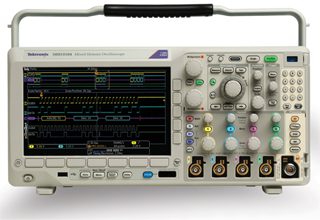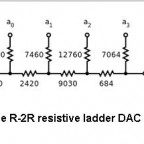The electron has close to zero mass, a negative charge, and revolves in an orbit around its atomic nucleus or, alternately, moves through space or through a conductor, in which it is a charge-carrying free electron.
An electron is also a fermion, which means it follows the Pauli exclusion principle: No two electrons can occupy the same quantum state.
The electron interacts with gravity and electromagnetic forces, and it is subject to weak-force interactions.
It has close to zero mass, 9.1093837015 X 10-31 kg, about 1/1,836 the mass of a proton.
It is stable, meaning it does not spontaneously disintegrate, with a known lifetime in excess of 6.6 × 1028 years.
Its electric charge is -1.
Its spin is ½.
One ampere of electric current consists of 6.242 X 1018 electrons flowing past a given point per second.
Mass, charge and magnitude (but not direction) of spin as far as we know are everywhere in the universe the same. And while planetary orbits all lie in the same plane, electron orbits around the atom’s nucleus are at different angles, so the orbital path can be more accurately visualized as a shell.
The electron appears to be a genuine elementary particle, with no internal structure that we’ve been able to discern. It has never been split, though exotic physics experiments in certain materials have been able to break down an electron into smaller “charge pulses,” each of which carries a fraction of the electron’s charge.
In that regard, researchers at the Ecole Normale Supérieure in Paris and the Laboratory for Photonics and Nanostructures in Marcoussis in France observed the single-electron fractionalization on the picosecond scale in 2015. The researchers used what’s called the Hong-Ou-Mandel experiment normally used to measure the degree of resemblance between two photons–or in the case of the electron, electron charge pulses-in an interferometer.
The complete explanation of the experiment is quite involved. In a nutshell, Coulomb interactions cause the original electron to split into two distinct charge pulses. Researchers concluded that, when a single electron fractionalizes into two pulses, the final state cannot be described as a single-particle state, but rather as a collective state composed of several excitations. For this reason, the fractionalization process destroys the original electron particle. Electron destruction can be measured by the decoherence of the electron’s wave packet.
Researchers at Ecole Polytechnique Federale de Lausanne in France have also found that electrons in what are called quasi two-dimensional magnetic materials appear to split into a magnet and an electrical charge, which can move freely and independently of each other and are referred to as “fractional particles.”
Counting and confining individual electrons, long considered impossible, is currently being done using semiconductor technology. Twenty nanometer-square CMOS transistors which, because of their small size, can be inexpensively cooled to the required 15-°K temperature, can confine a single electron. The electron wave function occupies the semiconductor lattice and remains confined, sometimes for long intervals.

As researchers increasingly work with single electrons and analyze their constituent properties, you might wonder whether it’s possible to actually view a single electron. If you are not up to date in atomic physics, the first device that might come to mind for imaging objects on the scale of electrons is the atomic force microscope. An AFM generates images by scanning a small cantilever over the surface of a sample. The sharp tip on the end of the cantilever touches the surface, bending the cantilever and changing the amount of light from an associated laser that reflects into a photodiode. The height of the cantilever is then adjusted (usually through a feedback loop) to restore the response signal resulting in the measured cantilever height tracing the surface.
AFMs can indeed be used to identify atoms at a surface and to evaluate how a specific atom interacts with its neighboring atoms. But though they have improved over the years, they can’t image down to the scale of single electrons.

The closest researchers can come to imaging an electron is to image the velocity distribution of electrons knocked off ions. For that they use what’s called a velocity map imaging spectrometer. Only developed in 1997, the VMIS consists of a long tube with the ionization region in one end and a detector system in the other. On each side of the ionization region an electrode with high voltage creates an electric field. The voltages on the two electrodes are high. Electrons get launched toward the detector, typically a multichannel plate and a CCD-camera. The position where the electrons hit the detector give information about the electron energies.
For example, if the electrons are emitted from an s-orbital (i.e. a spherical orbit around the nucleus) the angular distribution is equal in all directions. But if the ionized level is a p-orbital (dumbbell shaped) or higher there will be a higher probability the electrons will be emitted in certain angles.
A VMIS is not exactly a device you can cobble together in your garage. Consider the VMIS in use at Lund University in Sweden. There researchers are using a quantum stroboscope based on a sequence of identical attosecond pulses that are used to release electrons into a strong infrared (IR) laser field exactly once per laser cycle. They use a VMIS to record the resulting electron momentum distributions as a function of time delay between the IR laser and the attosecond pulse train. Because the train of attosecond pulses creates a train of identical electron wave packets, a single ionization event can be studied stroboscopically.
The whole scheme depends on generating identical attosecond pulses. Researchers point out that it takes about 150 attoseconds for an electron to circle the nucleus of an atom. An attosecond is 10-18 seconds, or, expressed in another way: An attosecond is related to a second as a second is to the age of the universe






Leave a Reply
You must be logged in to post a comment.